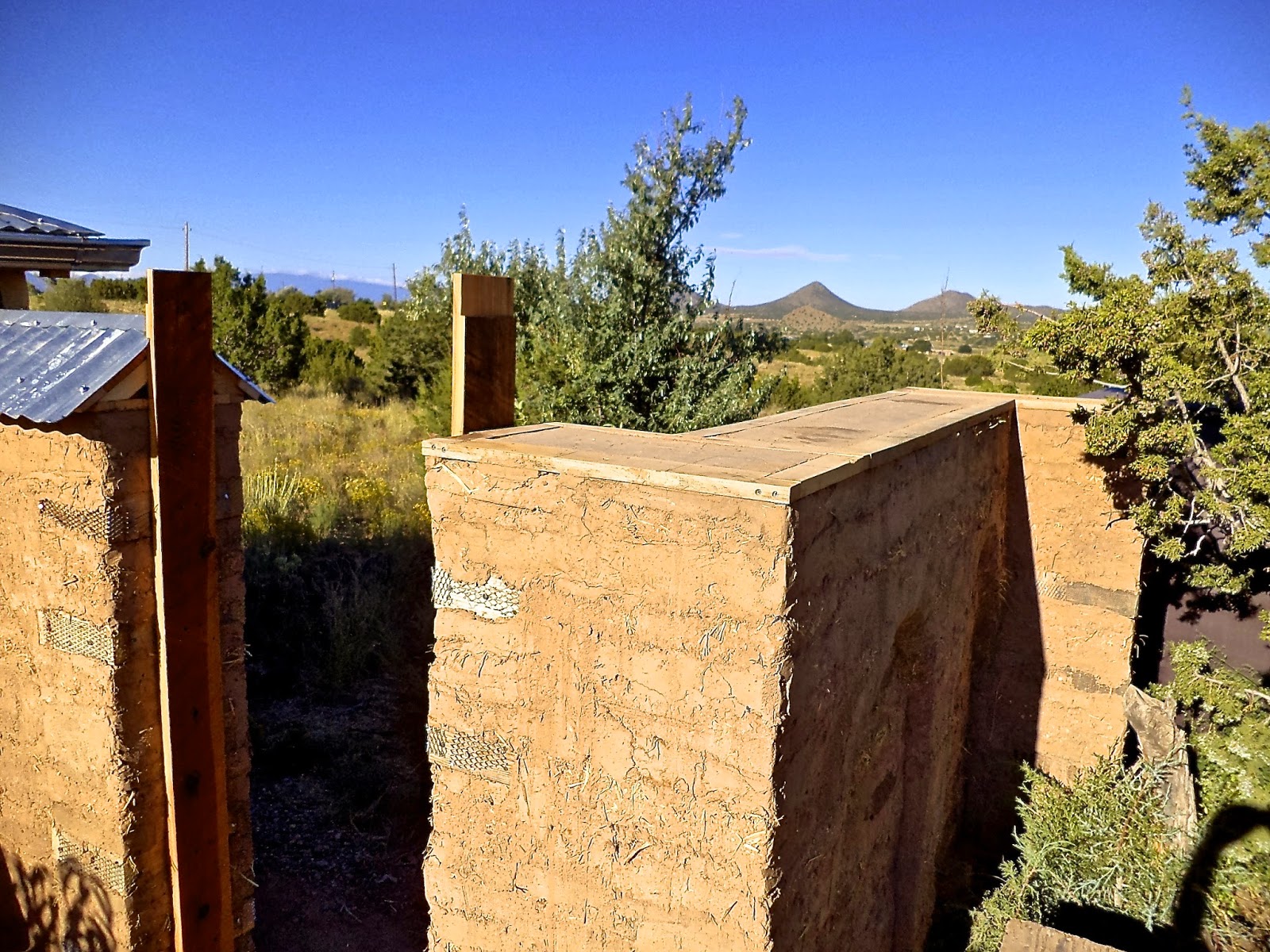In this fourth part of our series on building the wall you see above
let's take a look at how we did the metal cap that will protect the wall from the elements.
An adobe will not last without protection from rain.
All of the posts to date are:
Building An Adobe Wall: #3 Putting Up Adobes,
Building An Adobe Wall: #4 Putting On The Cap,
Building An Adobe Wall: #5 Hip Roof For The Gate,
Building An Adobe Wall: #6 Plastering And Creating The Designs,
Building An Adobe Wall: #7 One Year On And A Companion Fence.
Building An Adobe Wall: #4 Putting On The Cap,
Building An Adobe Wall: #5 Hip Roof For The Gate,
Building An Adobe Wall: #6 Plastering And Creating The Designs,
Building An Adobe Wall: #7 One Year On And A Companion Fence.
In the last post we got all of the adobes put up except for the last course as you can see above.
Having gotten the wall formed pretty close to where it is ready for the eventual adobe mud plaster,
we are taking a break from the wall giving it some time to dry...
…and we head over to the shop to make the brackets you see above.
Using yet more recycled and scrap wood for these brackets they will be securely mudded
in between each brick on the top course to hold the framing we will use for the cap.
Each one is 4" wide which is the thickness of the bricks
and 14" long which of course is the width of the wall using our bricks long ways.
The 2" x 2" pieces are to provide a nailer on the top
and the bottom one will firmly key the bracket into the mud mortar
In the photo above the brackets have been securely installed in between the bricks
and 1"x "nailers" have been screwed into them
( despite their name do not nail them as the hammering will loosen the brackets).
Also you will notice the jambs for the gate have been screwed into the gringo blocks
as they need to be in place before the cap can go on.
I have completed the cap to the right of the gate opening.
The nailers were preassembled into rectangular sections to the exact dimensions of the wall
before screwing the assemblies to the brackets.
Once installed I filled in between the 1"x nailers with mud covering the brackets,
and making the top nice and almost smooth.
Using a framing square and pencil I made the marks you see above for where each "truss" will go.
And now the trusses are securely screwed into the 1"x nailers.
Even though I used the term nailers everything is screwed together
as hammering would have vibrated the connections to the adobe loose.
Adobe is pretty amazing stuff but it has very clear limits.
To make the trusses I cut out one piece of plywood to the 14" width of the wall
with the height that I wanted and used that for the pattern for the rest.
The 1"x that I screwed to the plywood is only necessary for screwing the trusses to the nailers...
…and to provide a place to screw the purlins to as the edges of plywood are not only too narrow
but they will not hold screws well at all.
The purlins (the long 1" x 3"+/- boards) provide a place to screw the corrugated metal and flashing to.
Basically we are building a miniature roof using the same techniques as any roof would.
The corrugated metal and flashing have been installed and the wall has been plastered.
In this area of northern New Mexico, as in much of the world, corrugated metal is very common
and the style here, despite it only being a wall, is similar to many of the older homes and churches.
In the next post I will show how I made the standing seam metal roof you see above
that will protect the eventual gate.
Also to see more ideas for caps go to my post:
Capping An Adobe Wall.
I have come to think of the system you see above as superior for a couple of reasons:
- using masonry (cement or brick) for a cap allows water to wick into the adobe
and generally does not provide an adequate drip edge,
- masonry also requires heavy lifting to get the material to the top of the wall,
- using a cement based stucco to cap the wall will inevitably lead to cracking
which allows in moisture causing damage to the adobe hidden from sight.
This system addresses all those problems:
- it is very sturdy but light weight,
- it provides for an effective overhang and drip edge that keeps water clear of the adobe
except in the case of hard driving rains,
- the pitch and overhang of the cap can be changed for different tastes and conditions,
- properly built it will last far longer then any of the alternatives mentioned.
All of the posts to date are:








